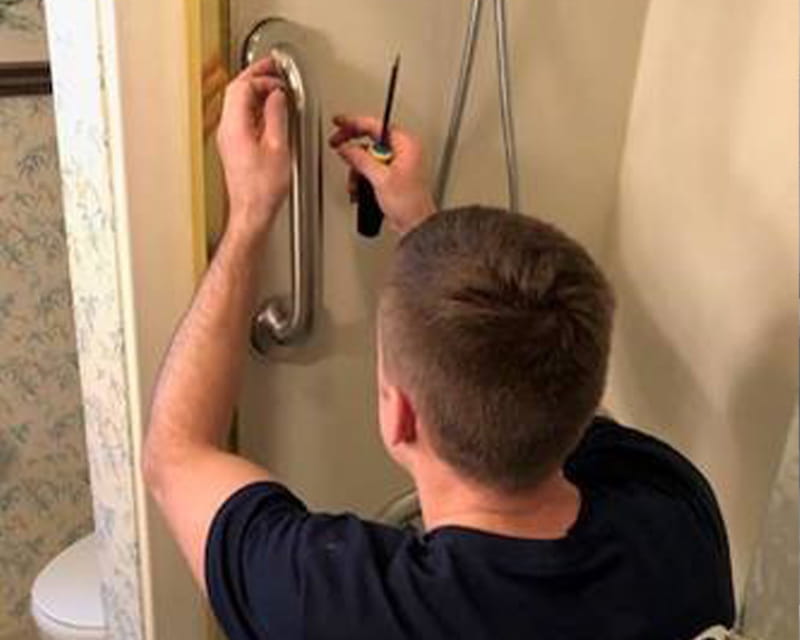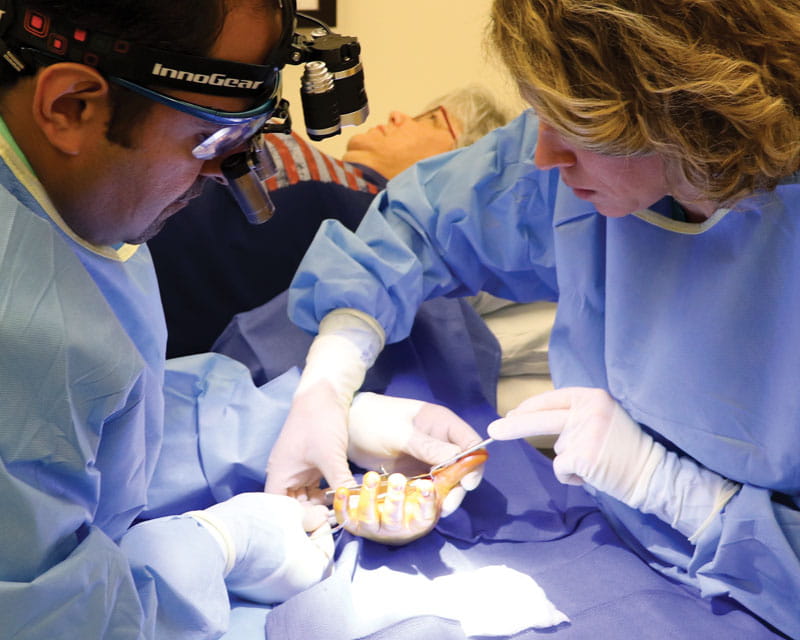
improving patient care
 When most patients think of surgery, they usually think of anesthesia and being “knocked out” for the procedure.
When most patients think of surgery, they usually think of anesthesia and being “knocked out” for the procedure.
But for many hand surgery candidates at The Ohio State University Wexner Medical Center, wide-awake procedures are becoming more commonplace.
“Wide-awake surgery is a much more efficient and more convenient way of doing these hand procedures,” says Hisham Awan, MD, an Ohio State orthopaedic surgeon specializing in hand surgery. “While the surgery itself takes the same amount of time, the preparation process is much quicker.”
Ohio State has been performing wide-awake hand surgeries for the last six or seven years, Dr. Awan says. Two years ago, the team started doing the procedures in-office as well as in the procedure room.
With wide-awake procedures, the surgeons don’t need to use anesthesia and instead use a combination of lidocaine and epinephrine. Because there’s no need for general anesthesia, patients don’t need to fast before surgery. Pre-op testing is also minimal.
“The patient comes in, we numb the hand and we start the procedure,” Dr. Awan says. “It’s very efficient, very safe and very inexpensive for both the insurance companies and the patient.”
The team is able to do a range of hand surgeries while the patient is awake, from simple to complex procedures. Some of the most common conditions treated with wide-awake surgery include trigger finger, carpal tunnel syndrome and tendonitis of the wrist. The team can also use wide-awake surgery for tendon repairs, fracture fixation and removal of small lumps or bumps on the hand.
Aside from the efficiency and cost savings, wide-awake procedures don’t require as many heavy narcotics. The procedures also tend to have better outcomes than traditional surgery with anesthesia.
“There are a lot of good reasons why we should be doing more wide-awake surgeries,” Dr. Awan says. “These procedures also allow the patient to move the hand and tendons while we are repairing them, which gives us a better idea if the treatment will work and results in better outcomes.”
Not using anesthesia also helps the team treat more patients, Dr. Awan says. Oftentimes, patients with serious medical conditions (such as heart or lung problems) are not candidates for surgery because it is not safe for them to undergo anesthesia. Now, thanks to wide-awake surgery, these patients can undergo treatment for hand problems and enjoy a better quality of life.
The wide-awake procedures also create less waste, as traditional operating room setups require many more supplies, instruments and surgical drapes.
As the most experienced wide-awake surgeon in the region, Dr. Awan hopes his team can begin to increase patient volume by adding more space for in-office procedures.
Educating patients is also a key component to expanding the program.
“Many patients are afraid to stay awake during the procedure because they have a lot of anxiety about feeling pain,” Dr. Awan says. “Once we educate them about the process, they’re more open to the idea.”